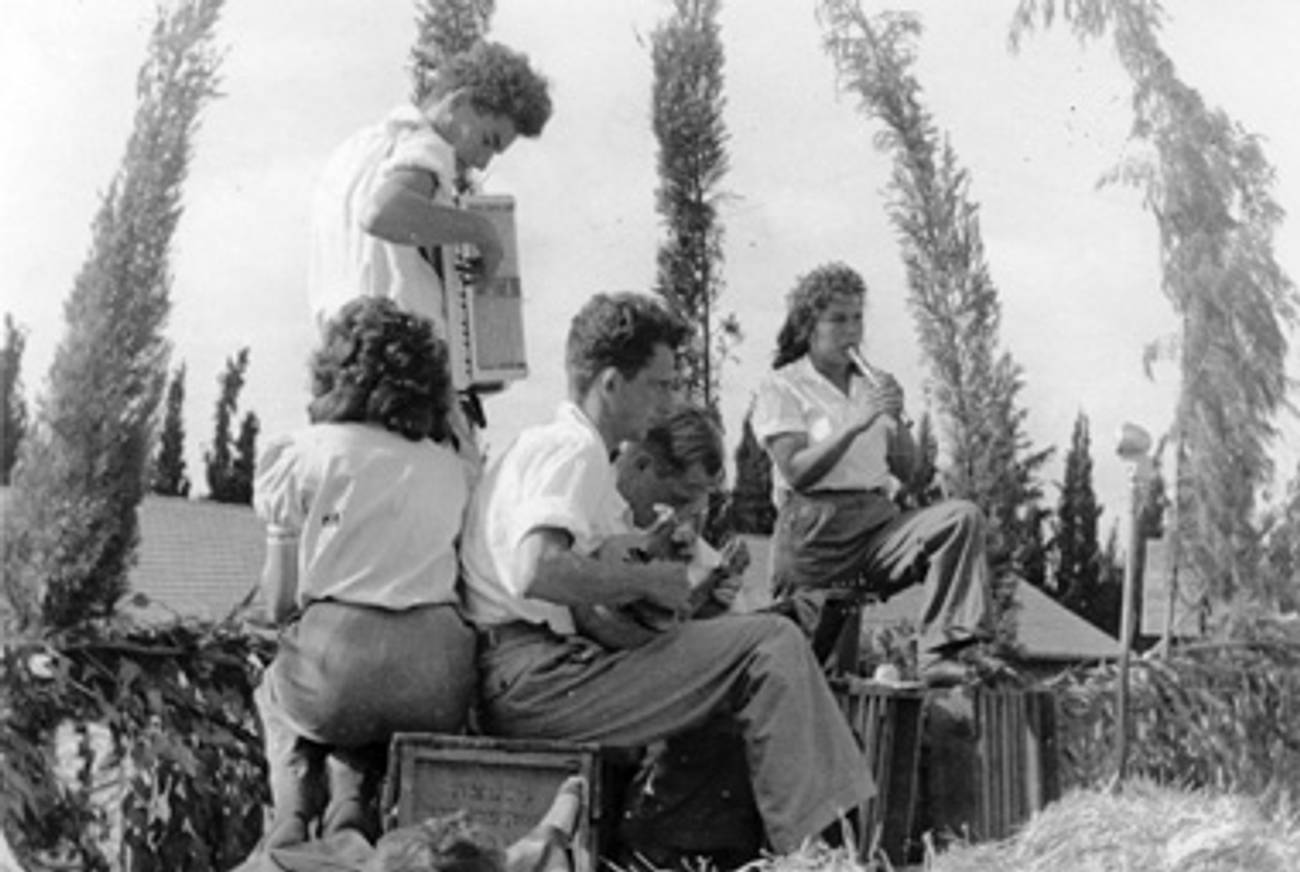Folk Fusion
Israeli expats are bringing the sounds of their youth to new jazz projects




Jazz and Jewish music have been talking to each other for a long time.
At first, this was a klezmer thing, as musicians like trumpeter Ziggy Elman brought their Eastern European baggage to “freilach jazz” in the 1930s. More recently, musicians like saxophonist Paul Shapiro, percussionist Roberto Juan Rodriguez, and trumpeter Frank London have married pre- and post-war jazz styles to everything from Ashkenazi liturgical songs to Sephardic ballads.
Now the conversation is expanding to include Israeli music, too, thanks to a small but growing number of expatriate Israeli jazz musicians with a taste for the sounds of home. I’d call the ensuing phenomenon “sabra swing,” but the music is too good to warrant such a stupid-cute label.
Take, for example, pianist Yaron Herman’s latest release, Muse. Despite the presence of a string quartet on several tracks, Muse is at heart a trio recording—Herman is joined by bassist Matt Brewer and drummer Gerald Cleaver—and like many contemporary jazz outings, the programming is eclectic. There are several original compositions and tunes by both Dizzy Gillespie and Bjork, as well as two Israeli classics: “Lamidbar” (“To the Desert”), by Alexander Argov, and “Lu Yehi” (“May It Be”), by Naomi Shemer.
Argov (né Abramovich), who was born in Moscow and came to Palestine in 1934, and Shemer, who was born on a kibbutz by the Sea of Galilee in 1930, both lived through the British Mandate, the War of Independence, and much of what followed. (Argov died in 1995, Shemer in 2004.) You can hear that historical depth in their work, and it makes for some interesting resonances on an album whose overall aesthetic owes more to postmodern jazz icons like pianist Brad Mehldau and the genre-bending trio The Bad Plus than it does to Israeli pop or folk music.
“Lamidbar,” for example, is a staple of Israeli folk dancing classes that Argov wrote in 1952, and its words, by Chaim Chefer, are laden with the kind of imagery you’d expect from an era of heroic farmer-soldiers. (Argov wrote songs both for the Israeli Defense Forces and the pre-independence Palmach, an elite strike force whose members were housed and trained on kibbutzim.) You can almost taste the sweat, the gunpowder, and the Zionism in the tune’s Middle Eastern marching rhythm and its chest-pounding lyrics:
To the desert, land without water
O wasteland, we have returned
Salt-filled sands, land of wrath
The warriors returned like a storm…
Herman doesn’t even touch the melody until he’s a quarter of the way into the track. Instead, he begins with some eerily oud-like work on the piano strings, and by the time he does slide obliquely into the theme, Cleaver and Brewer have established a deep, driving groove better suited to the hipsters at Bonnaroo than to the circle-dancers at the JCC.
Herman gives “Lu Yehi”—with its melody borrowed from the Beatles’ “Let It Be”—an elegiac solo reading that matches the somber mood of the Hebrew lyrics, which were inspired by the unusually prolonged fighting and heavy losses of the 1973 Yom Kippur War: “It’s the end of summer, the end of the road/Let them return safely here.” (Shemer had a knack for capturing the national mood at pivotal moments; her “Yerushalayim shel Zahav” (“Jerusalem of Gold”), written just prior to the 1967 Six-Day War and the reunification of Jerusalem, became the country’s unofficial national anthem in their aftermath.)
There’s also a tune titled “Lamidbar” on another recent jazz album, Idit Shner’s Tuesday’s Blues. Oddly, her version of the tune is credited to Shemer, not Argov, and it doesn’t sound like the neo-folk song that Herman reinvents on Muse. And with good reason: it isn’t. Shner’s “Lamidbar” is really “Kibbuy Orot” (“Lights Out”), a song Shemer wrote in 1958 that describes a military encampment in the desert at nightfall. Shner—an alto saxophonist with a tart sound, a kick-ass rhythm section, and a gift for spinning flinty modern jazz from pre-modern Jewish material—learned the song as a child from her father, who called it “Lamidbar” because of the recurrence of the Hebrew word for “desert” (midbar) in the refrain: “Night has come to the desert; smoke rises from the campfires.” Schner gives the melody a searching, wistful reading that probably has as much to do with her own warm childhood memories as the composer’s original intent.
The story behind Shner’s mislabeled tune is an interesting one—a childhood favorite operating under a false name is reclaimed and reinterpreted by a mature musician years later and thousands of miles from home—and like Herman’s transmogrification of “Lu Yehi” and the real “Lamidbar,” it speaks to the complexity of musical transmission, the fluidity and subjectivity of musical experience, and the myriad ways in which artists are able to mine their personal histories for useful material. In the case of both Shner and Herman, those histories are rooted in a unique place with a distinctive, not to mention idiosyncratic, musical tradition—one that appears to travel surprisingly well.
Alexander Gelfand is a recovering ethnomusicologist, a sometime jazz pianist, and a former West African drummer. His work has appeared in the New York Times, the Chicago Tribune, the Forward, and elsewhere.
Alexander Gelfand is a recovering ethnomusicologist, a sometime jazz pianist, and a former West African drummer. His work has appeared in the New York Times, the Chicago Tribune, the Forward, and elsewhere.